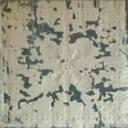Yahoo Answers is shutting down on May 4th, 2021 (Eastern Time) and beginning April 20th, 2021 (Eastern Time) the Yahoo Answers website will be in read-only mode. There will be no changes to other Yahoo properties or services, or your Yahoo account. You can find more information about the Yahoo Answers shutdown and how to download your data on this help page.
Trending News
If you could combine several works/melodies into a polyphonic piece, what would they be?
Unless you're exceptionally good at imagining music in your head (or feel like putting in the time at the piano), you probably won't know what this will sound like. So I mean this question as more of a fun way to combine the ideas of pieces. (Of course, you're free to do whatever you want) ;) This would work especially well with opera- I wish I knew it better!
For instance, I might combine "The Elephant" from Saint-Saens' Carnival of the Animals with the music from the scenes in Figaro where both the Count and Cherubino are trying to hide. Somehow, the thought of the count as an elephant trying to hide made me smile :)
Petr b, I see your point (maybe this is more of an analogy game), but who in the literature section is going to be versed in classical music? Let's just have fun with it, instead of getting bogged down in technicalities. :)
Suhwakhaksaeng- wow, I wasn't expecting an actual piece! I wish I could play it on piano right now, but that will have to wait until tomorrow! (Can't wake my Dad up)
Thanks petrb :) I'd never heard of that term, or that Bach had done that!
4 Answers
- petr bLv 79 years ago
To be truly polyphonic those two or more elements have to work with each other musically.
This question only works if you ignore the musical content and go only for the literal premise, making your question more a literal abstraction than a musical one, perhaps better suited to the literature section as a tantalizing 'analogy' juggling game..
Naming a handful of specific disparate musical elements which would work together would be handing your idea and material out for free, to others... So if anyone has any that really work, unless that piece is already finished and copyrighted, I doubt if they're gonna be spilling those beans:-)
Best regards.
Okee-do: Quodlibet = a contrapuntal play of several popular tunes. There is one in Bach's Goldberg variations which combines five independent existing popular tunes, and there is another in Arthur Honegger's 'Cantate de Noël"
I don't know the 'tunes' in the Bach, but knowing the old Thuringians sense of fun, they might have some fun juxtaposed meaning as to the various titles or lyrics of same. The Honegger, of course, are a handful of different noëls from various times and nationalities, of those some are of folk origin,
I'm sure there are a good handful of other Quodlibets, before and after Bach's, littering the canon of music literature.
- FieryLv 59 years ago
I was chuffed by your example =]
This isn't example of a combination of several works - rather it is the result of combining of two amazing minds. Combine the mind of Beethoven with that of the neighbor of Chopin and this is the delightful result! - http://www.youtube.com/watch?v=d2QXolVWfJc
So to answer your actual question I would be relatively interested in combining Fantasie-Impromptu with Moonlight Sonata Pachelbel's Canon and Prelude in C# Minor and calling it "Rubbish" lol
What about the 2nd movement of Prokofiev's 3rd Piano Concerto and the 2nd movement of Mozart's D minor Piano Concerto K 466?
- suhwahaksaengLv 79 years ago
How do you like my Moonlight Canon?
http://img.photobucket.com/albums/v500/pentatonika...
You can run Jolly Old Saint Nicholas with the Pachelbel Canon.
You can also run Swanee River with Dvorak's Humoresque.
You can also run Frere Jacques with Three Blind Mice.
In his Unbegun Symphony, Peter Schickele runs Oh Susannah with the William Tell Overture.
In some Broadway musicals, there is a number called a "fugue," in which previously heard songs from the musical are sung simultaneously.
Of course, this is not to be confused with the word "fugue" as defined in Baroque counterpoint terminology.
I have a quodlibet page on my Website:





